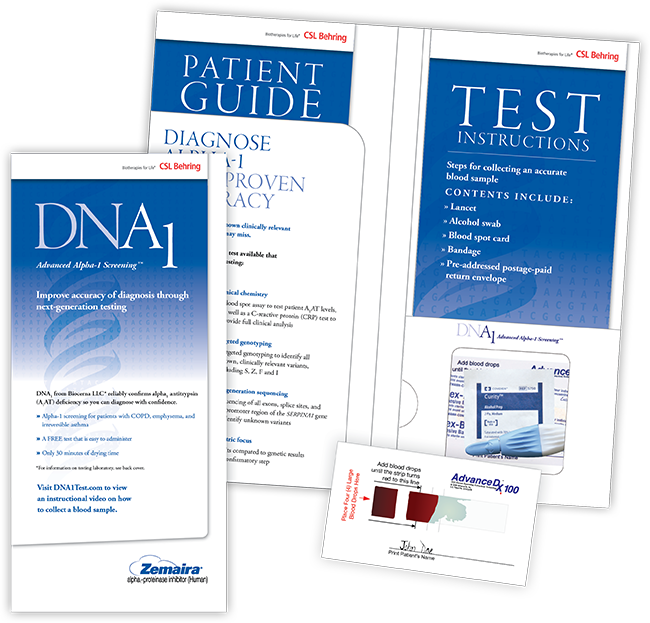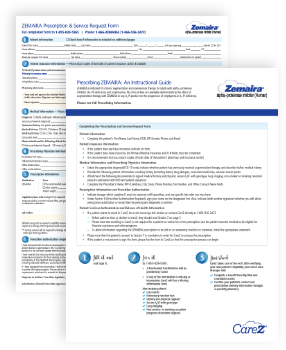Diagnosing A1AT Deficiency (AATD)
AATD is a genetic disorder commonly referred to as “genetic COPD”2
Because AATD shares an identical clinical presentation as more common conditions like COPD and asthma, it can prove especially challenging to diagnose.2,3
AATD is the most common genetic risk factor for COPD.2
In fact, current guidelines recommend screening all individuals diagnosed with COPD or unexplained bronchiectasis for AATD regardless of age or ethnicity.2,4

An estimated 3% of all people diagnosed with COPD may have undetected AATD.2
AATD: The diagnosis dilemma
>90% of patients living with AATD have not been properly diagnosed5
81% of patients with AATD have COPD with self-reported symptoms of asthma, chronic bronchitis, and emphysema, often in combination6
43% of patients with AATD reported seeing at least 3 physicians before receiving a correct diagnosis7


AATD contributes to progressive lung damage
Healthy lung vs
A1AT-deficient lung
A1AT normally binds neutrophil elastase and prevents it from damaging healthy tissue.7
A1AT keeps neutrophil elastase levels in check, which protects the lung against alveolar wall destruction.8
A1AT deficiency results in uninhibited neutrophil elastase activity, an imbalance that can lead to lung damage, including emphysema.9
AATD may be more prevalent than you think


Don't hesitate—start your patients on augmentation therapy today

Early diagnosis of Alpha-1 can help patients:
- Mitigate or avoid adverse psychological effects associated with delayed diagnosis12
- Begin augmentation therapy, which may help to improve survival and/or reduce the rate of decline in lung function13,14

Advanced Alpha-1 Screening
Find the 1-in-20 Alphas that other tests may miss15
Distinguishing alpha1 antitrypsin (A1AT) deficiency based on clinical presentation and evaluation alone is not possible.3
Our DNA1 Advanced Alpha-1 Screening™ Test Kit provides targeted genotyping and next-generation gene sequencing without the need for additional testing.
- Simple test administration with 1 blood spot (an average of 4 to 6 drops of blood) needed
- Isoelectric focusing phenotyping results provide added confidence in accurate analysis
- There is no charge for the kit, lab processing, or lab results
Support and guidance for abnormal Alpha-1 test kit results
Along with the indication of abnormal results, you'll get information to help your patients take the next step from diagnosis to starting on augmentation therapy with confidence.

Physician's guide to interpreting your patient's test results, with patient education talking points

The American Thoracic Society recommends family screening for first-degree relatives (parents, children, and siblings) of patients diagnosed with Alpha-1.13
ORDER A FREE SCREENING KIT TODAY
Get the DNA1 Advanced Alpha-1 Screening™ Test Kit for accurate results the first time.
NEXT:
DNA1 Test Kit Request





